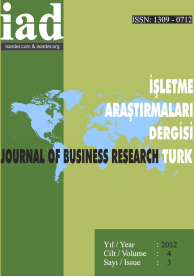Linking Flexible-Dynamic Team Structures through Distributed Leadership: A Qualitative Evaluation with Single Design Case Approach and Application of Roster Method
Linking Flexible-Dynamic Team Structures through Distributed Leadership: A Qualitative Evaluation with Single Design Case Approach and Application of Roster Method
Author(s): Aykut Berber, Yasin RofcaninSubject(s): Economy, Business Economy / Management, Methodology and research technology
Published by: Orhan Sağçolak
Keywords: Distributed leadership; flexible-dynamic teams; Roster method; single design cases;
Summary/Abstract: Fierce competition in every sector has forced companies to re-design their structures towards being more customer-focused, faster and more responsive. In this vein, there is rising dominance of flexible-dynamic team structures in organizations and these teams are, most of the times, self-managed. Among these team structures, leadership characteristics are not only observed in official team leaders but such characteristics are distributed among team members. The concept of "leading without leaders" has gained scholarly interest and in this paper, aim is to evaluate and combine constructs of distributed leadership and flexible-dynamic team structures within a single design case approach. Local division of a multinational company that operates in luxury cosmetics sector is selected. In-depth interviews were conducted at the company site, and flexible-dynamic team structures were examined in detail. As a second tool, Roster method is applied to see existence and strength of distributed leadership among different departments. Findings supported that organizational structure of this company has become more flexible-dynamic with distributed leadership characteristics seen across all departments. These findings were significant because our selected company entered into Turkey market twice and the second entry has been operationally successful. Arguments are offered regarding differences between two periods and further implications are suggested in relation to adoption of a new and more responsive company structure. Structural changes between two periods constituted the focal point of this research.
Journal: İşletme Araştırmaları Dergisi
- Issue Year: 4/2012
- Issue No: 3
- Page Range: 55-69
- Page Count: 15
- Language: English

